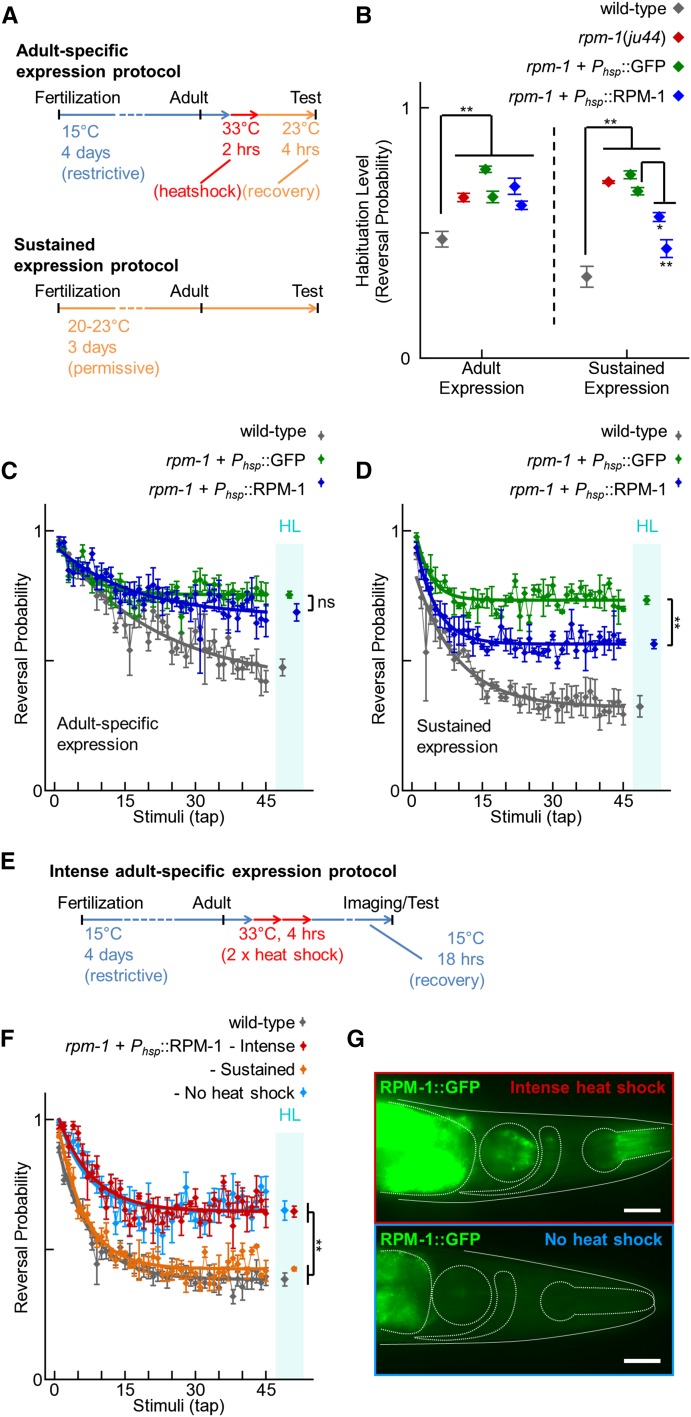Figure 5.
Adult-specific expression of RPM-1 does not rescue habituation defects in rpm-1 mutants. (A) Schematic of the protocol for induction of adult-specific expression and sustained developmental expression of RPM-1 using the hsp-16.2 heat shock promoter. (B) Habituation of wild-type animals (gray), rpm-1 (lf) mutants (red), and rpm-1 mutants expressing GFP (green) or RPM-1 (blue) using the heat shock promoter under the indicated expression conditions. Note that adult-specific expression of RPM-1 did not rescue the habituation defect in rpm-1 mutants, whereas sustained expression of RPM-1 partially rescued the habituation defect in two independently derived transgenic lines compared with the minimum control line (asterisks). (C−D) Representative examples of complete tap habituation response profiles for the genotypes and conditions in panel B. Connected points represent the mean ± SEM of the tap response for each stimulus (n = 4−6 experiments). Smooth thick lines indicate the best-fit exponential curves. Points in the cyan bar labeled HL indicate the habituation level (asymptote of the curve ± SEM). (E) Schematic of the protocol for induction of intense adult-specific expression using the hsp-16.2 heat shock promoter. (F) Habituation of wild-type animals (gray) and rpm-1 mutants expressing RPM-1::GFP using the heat shock promoter under the indicated expression conditions (various colors). Data are represented as in (C) and (D). (G) Images of the head (solid outline) of Phsp-16.2::RPM-1::GFP positive C. elegans 18 hr after heat shock at 33° for 4 hr (top panel) or not heat shocked (bottom panel). Four internal structures are dash-outlined (from left to right): anterior gut (incomplete shape), posterior pharynx (circle), nerve ring (comma-shaped), and anterior pharynx (extended circle). Only heat shocked animals had visible RPM-1::GFP expression in the nerve ring. Stronger RPM-1::GFP fluorescence was present in the gut and pharynx. Low level autofluorescence is present in gut without heat shock (bottom panel). Scale bar is 25 μm. ns = not significant, *P < 0.05, **P < 0.01 for Student’s unpaired two-tailed t-tests between indicated groups.

